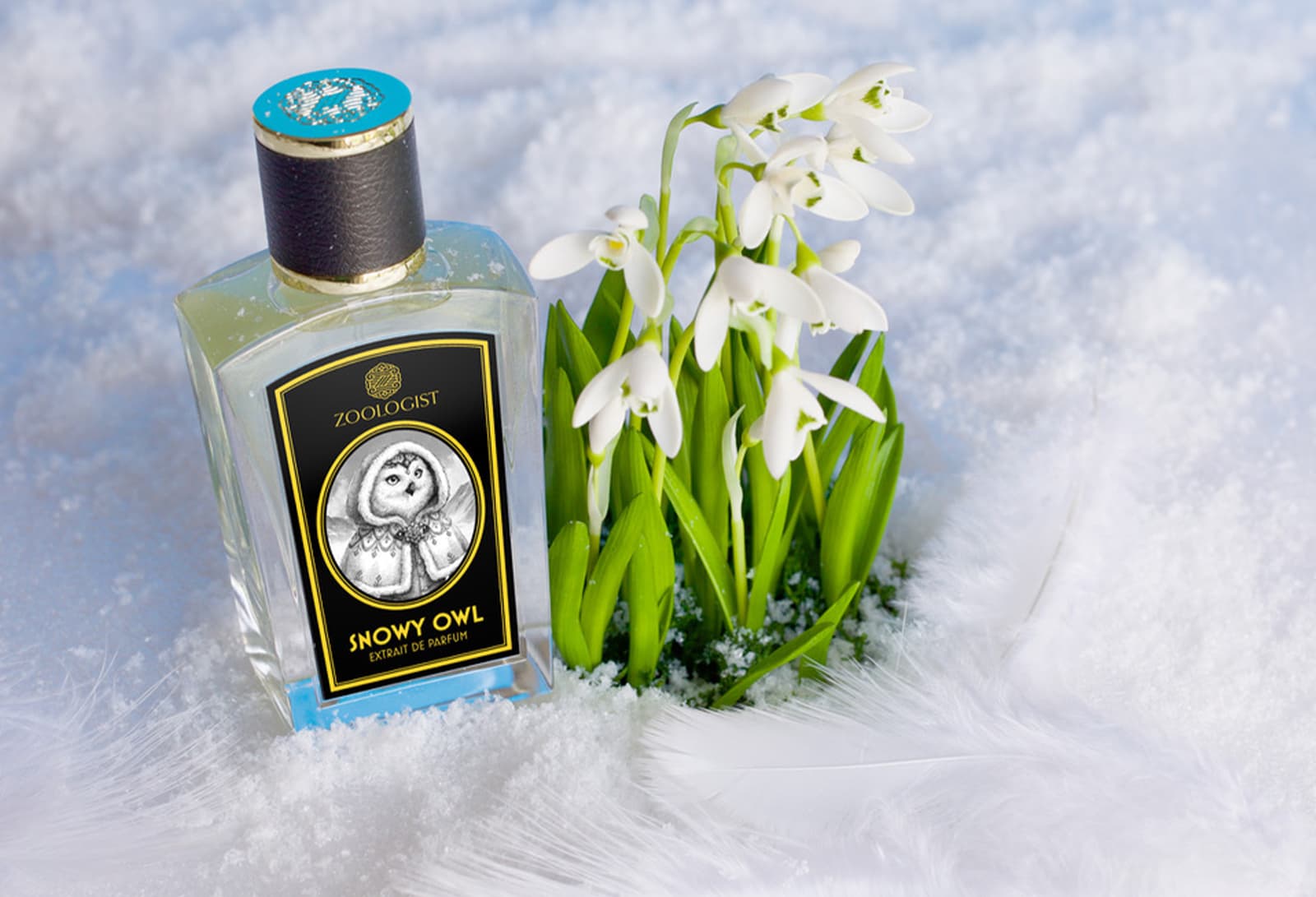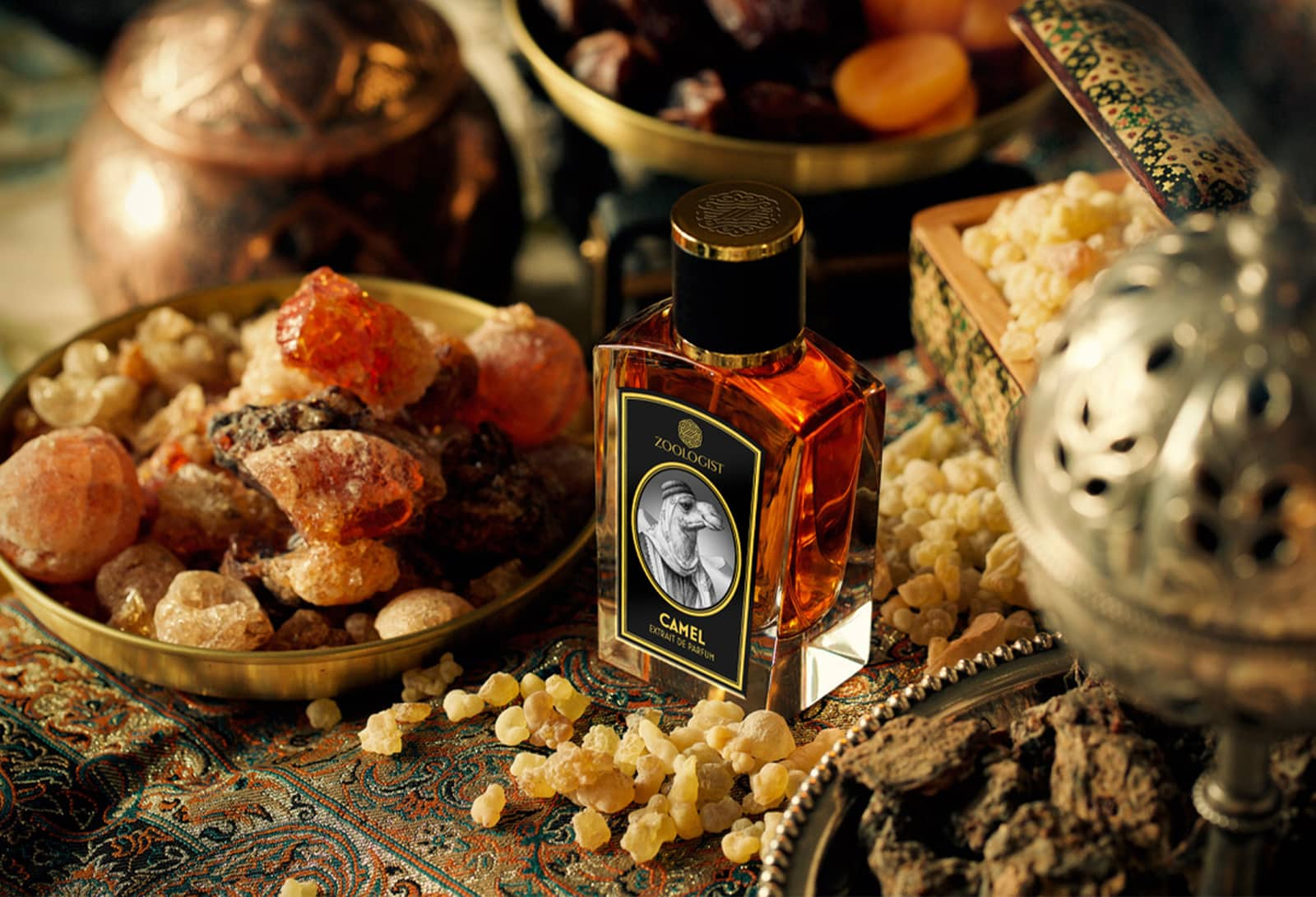Much like the animal kingdom, the fragrance industry is a multichromatic kaleidoscope of constantly shape-shifting elements. Toronto-based brand Zoologist is taking that metaphor to new heights with perfumes that take the nose inside a beehive, onto the branches of ylang and frangipani trees with a chameleon, or back in time to the days when dodo birds roamed the earth.
A strong narrative certainly pulls many a fragrance fan in, but it’s what’s on the inside that counts, and here too Zoologist delivers in spades. With fragrance aficionados calling Wong the “Frederic Malle of indie perfumers,” a who’s who of the most talented noses have added their contribution to the lively lineup: Luca Maffei (for Harvest Mouse), Sarah McCartney (for Macaque), Dawn Spencer Hurwitz (for Snowy Owl), and Pia Long (for Chipmunk) to name a few.
The result of each creative collaboration with Wong delivers an incredible variety of results, from the moody and melancholic black ink and salty accords of Squid (by Céline Barel) to the smoldering and smoky beast that is Tyrannosaurus Rex (by Antonio Gardoni). There are undoubtedly challenging fragrances in the Zoologist roster, like the damp cave- and fruit-scented Bat (first created by Ellen Covey in 2015, reformulated by Prin Lomros with more of a tropical twist in 2020), which helped establish the brand as a daring new entrant to the perfume arena. But there are also more subdued creations, carrying the same level of depth and creativity, just in a more wearable fashion—think the eucalyptus and menthol honey facets of Koala (by Spyros Drosopoulos) or the floaty floral facets of honeysuckle and peonies in Hummingbird (by Shelley Waddington).
The industry has embraced the brand just as much as customers, with the brand nabbing four finalist spots in the Art & Olfaction Awards, the title of “Best Indie/Niche Perfumes of the Last Decade” for Hummingbird, and "Perfume Extraordinaire of the Year" by the Fragrance Foundation for Squid.
Zoologist’s newest releases, King Cobra (created by Prin Lomros) and Rabbit (made by Fanny Bal), add further dimension to that olfactory universe. King Cobra is an aromatic woody concoction of cannabis, pomelo, soil tincture, black tea, camphor, and leather, while Rabbit is a floral green mixture of cinnamon, apple, carrot, jasmine, white almond, and hay. One is dark and herbal, the other is a whiff of carrot cake on a warm, sunny day.
The premise for the brand came to Wong in 2013, during a period of professional dissatisfaction working as a video game 3D modeler. He desired a creative project to completely call his own. Coinciding with his recent discovery of niche fragrance, the concept for Zoologist was born. Why animals? Wong always had an affinity for wildlife, but hearing the song “Carnival of the Animals” by Camille Saint-Saëns at primary school in Hong Kong is where the inspiration very first grew roots.
He began posting callouts for perfumers on the Basenotes.net forum and thus began the journey. For the first three years of the company’s existence, Wong was still working his day job. The brand debuted in 2014 with 3 perfumes: Beaver (a leather woody composition by Chris Bartlett), Rhinoceros (an aromatic leather scent by Paul Kiler, later reformulated by Prin Lormos), and Panda (originally by Paul Kiler, later redesigned by Christian Carbonnel).
His eye for visual presentation and marketing in the gaming world proved beneficial when it came to creating Zoologist’s identity: regal animal portraits (illustrated by Daisy Chan) adorning weighty glass bottles, topped off by leather-covered caps with gold rims. The animals are dressed in tuxedos or royal Victorian attire and the fragrance descriptions read like a nature documentary snippet or fictional tale from the creature’s habitat. It’s luxury, but with a humorous twist.
Wholesaling directly to small boutiques has helped him grow his business. Wong purchases the compound concentrates directly from the perfumers and mixes, bottles, and packages everything in-house to this day. Growing from humble beginnings of five bottles sold in its first year of business, 11 years onwards, the company is selling 20,000 bottles a year to 54 retailers (including Luckyscent, Bloom Perfumery, and Nose Shop) in over 25 countries. BeautyMatter spoke to the creative about the challenges of balancing the conceptual and wearable elements in a scent, the power of fragrance storytelling, and why no fragrance brand is an island.
You marked Le Labo Rose 31 scented hand lotion in a hotel room as the beginning of your fragrance journey. What made that encounter so special?
It simply surprised me because the scent was not what I expected from common hotel toiletries. Instead of smelling typically clean and fresh, it's rich, floral, and complex. I even questioned whether it was too feminine to wear outdoors. Little did I know that was the entrance to the niche fragrance rabbit hole.
Having built this brand from the ground up with no prior industry connections, what have been the biggest lessons and hurdles?
Almost everything was a big hurdle in the beginning, but I thought that was part of the thrill of starting a business project. At that time, all I had was the internet, which never showed me any good and reputable suppliers for bottles, sprayers, caps, or packaging boxes. Those suppliers were well-established and never needed to promote their businesses to gain new clients on the search engines. And of course, I didn't know any perfumers from the big industry players, and even if I did, I didn't think they would be interested in me because my budget and experience were so limited. However, I really enjoyed the learning process and hands-on experience despite it being bittersweet. Slowly, I began to meet people in the industry who gave me guidance, advice, and referrals, and I am forever grateful to them.
What do you look for in a perfumer who you choose to work with on a Zoologist scent? How many have you approached compared to them approaching you?
I like perfumers who are storytellers, who can create “visuals” with scents, and who don't mind adding something unusual to a formula that makes it interesting, even at the expense of wearability. In the beginning, I thought only indie perfumers would be interested in collaborating with me, so I only sought them out. However, as the brand grew and became more well-known, some perfumers, both indie and classically trained ones from bigger companies, approached me for collaborations.


Does the creative process of fragrance creation differ depending on which perfumer you are working with? If so, how?
Depending on the personality of the perfumer, a project could become a "tug of war" between me, the creative director, and the perfumer. If the perfumer is very open-minded and very "malleable" and they don’t mind exploring different routes, we could spend months creating and refining prototypes until we find “the one.” However, some perfumers have a very strong belief in their vision, so asking for any revisions could be very difficult. And very rarely, there are perfumers who approach me with a scent that's already developed and ask me to consider publishing it. If I think the scent is interesting and could conjure up an image of an animal in my head, I would ask them to fine-tune it with my suggestions. An example would be Moth.
What are the challenges of scaling your business as an independent fragrance brand?
I live in Canada, and to my knowledge, it's a country that doesn't have a strong fragrance industry to support indie fragrance houses. I couldn't find any local companies that would mix, filter, and bottle my fragrances in small quantities, so everything has to be done manually in-house by me and my assistants. I know that in Europe, indie brands have many options. Also, shipping is expensive in Canada, so it would be less of a headache if I had a subsidiary company and distributor outside of North America.
What are your bestsellers across which markets, and which styles of fragrance resonate most with your customers?
I think there are two types of customers—one that focuses on wearability and one that focuses on creativity, uniqueness, and self-expression. It’s rare to come up with a design that fits both criteria. And to be honest, wearability is king when it comes to sales. But you should not interpret that as saying that this is the direction I focus on when developing new fragrances. Some of my very controversial and unique scents, such as Tyrannosaurus Rex and Squid, are my bestsellers. However, easy-to-wear scents such as Harvest Mouse, Hummingbird, Panda, Penguin, and Rabbit do sell much more than the rest.
What is the key to straddling the line between a conceptual and wearable fragrance?
Giving excitement, surprises, and uniqueness to fragrances that people are already familiar with. If I use food as an analogy, a wearable fragrance would be a meal that’s enjoyable for the whole family, while a conceptual fragrance would be a dish that’s super spicy or uses very uncommon ingredients that you might question whether it’s edible or not. In between these two extremes would be a popular dish that sounds interesting but has a mild spicy pepper icon next to it on a restaurant menu.
What animal was the most challenging to capture in fragrance form, and why?
It’s not easy to create a fragrance that could incite the feeling of “danger,” as if you are a hunter or being hunted. It's also not easy to find some inspiration from ocean animals because the dominating smell is the water surrounding the animal. That's why my upcoming ocean animal scent designed by perfumer Antoine Lie is quite interesting. We tackle it from a different point of view: can fear or pain be represented by smell if we see or get into contact with that animal?
There has been a lot of buzz around independent fragrance brands taking on outside investment. Would you consider this for your brand?
I think those brands that got outside investment have some very commercial, wearable, and profitable scents. I honestly don't find those attributes consistently present in my perfumes. Zoologist scents are "all over the place" in terms of style, genre, and creative direction. I just like many things! But if such a day does come, I will consider it because everyone needs to retire eventually.
How do you feel about the success of and admiration for Zoologist among the industry and your customers?
I am just very glad that Zoologist has found a place in the niche fragrance market. No fragrance brand is an island, and we are inspired by each other’s fragrances all the time. However, there have been a few times that new niche and indie brand owners have approached me and told me that Zoologist was a big inspiration for them, and I am deeply honoured. Through social media, I have learned that both new and existing customers demand creativity and uniqueness from us, and if our fragrances do not meet their expectations, they do not hide their emotions. So, I am grateful that people care about this little brand, and their feedback has been a strong motivator for me.
What creations and projects do you have planned for the future?
Soon, in late fall 2024, we will release King Cobra. After that, in 2025, we will release a few fragrances inspired by dangerous and uncommon animals. They are truly strange. Customers who like challenging fragrances should seek them out. The pendulum will swing again in 2026 when we release some easy-to-wear cute animal fragrances.